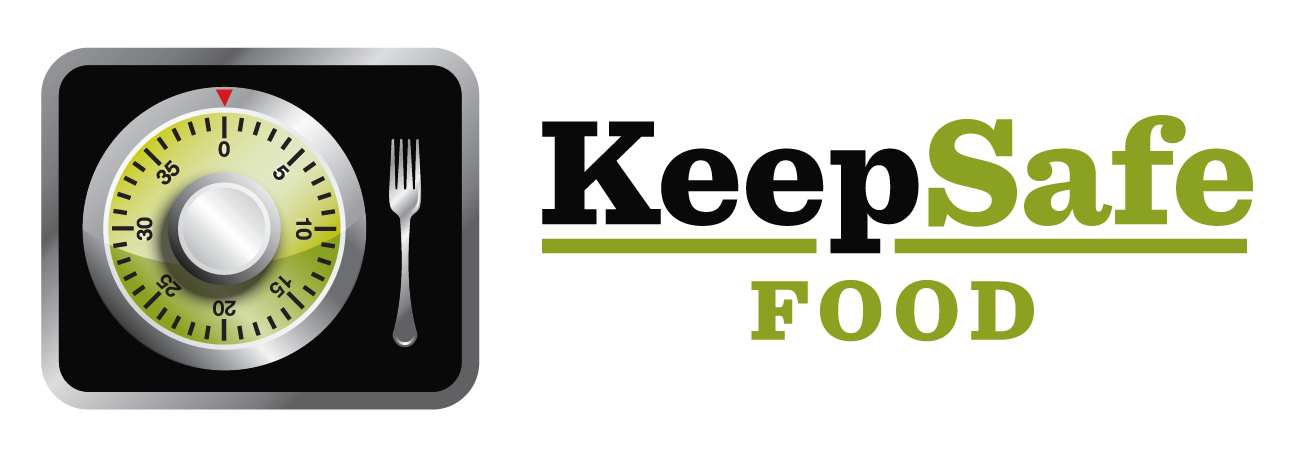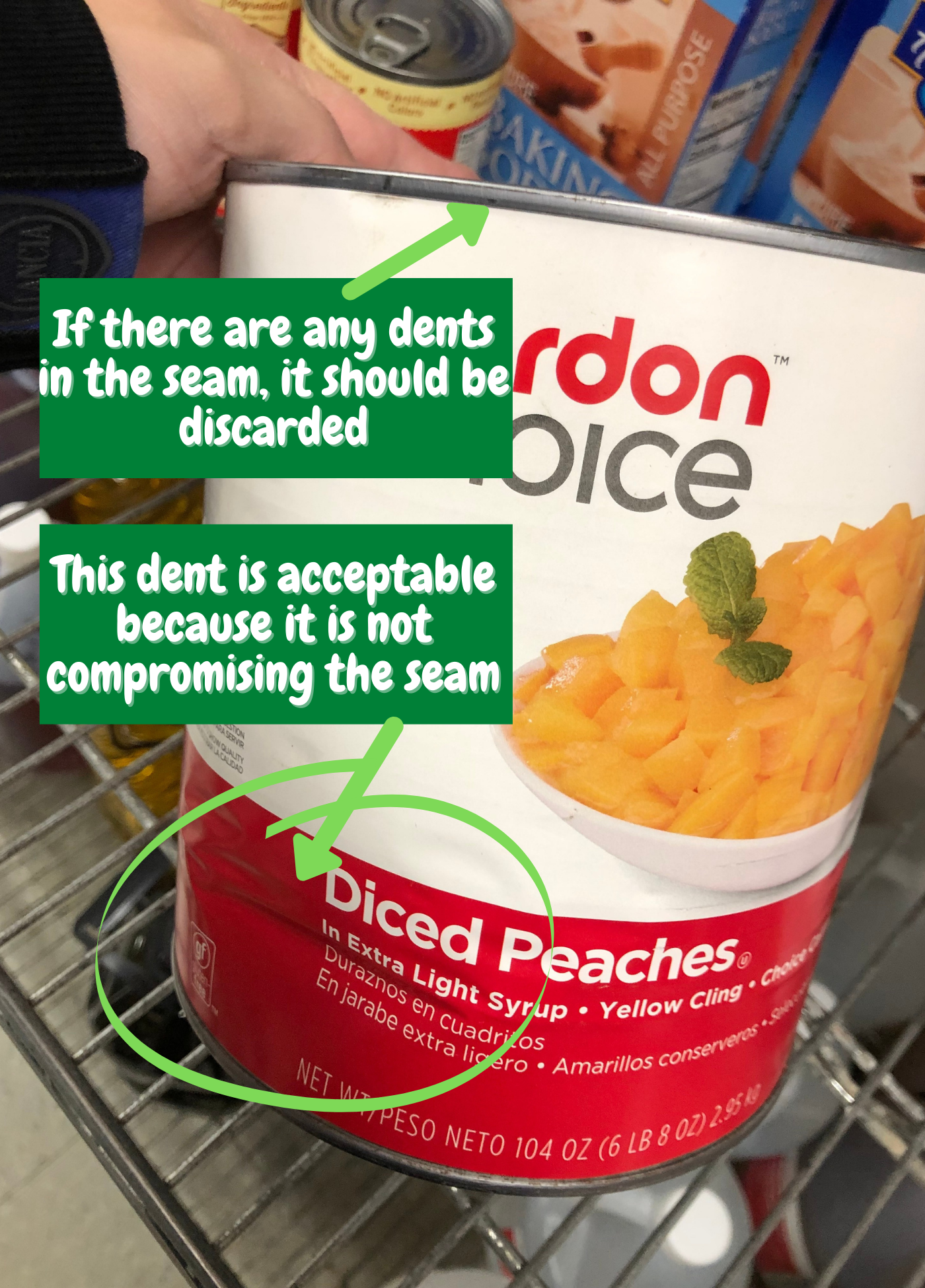Donation Dos and Don'ts : Where to Draw the Line
Wondering if that Food is worth Donating?
A Meals on Wheels Future Dietitian’s Advice on Donation Dos and Don’ts
Thank you in advance for your donation! I’m future dietitian, Diane D’Alesio and I work for Meals on Wheels (MOW) in Sycamore, Illinois. When you donate your unwanted or unused food, I see first-hand, every day, what a difference it makes. We rely on your generosity to keep our pantries stocked. One of the most often asked questions I get is: are donated foods safe? The answer, generally is yes, as long as you know what to watch out for. Mary Angela Miller, the Food Safety Dietitian, asked me to share what I’ve seen and learned on the receiving side of the counter.
Donations & Deliveries have Skyrocketed since Covid-19
I started working at the Meals on Wheels kitchen last year, well before Covid hit. I needed resume worthy food related experience to shore up my internship application and revenue worthy work to offset my college expenses. I’m a kitchen assistant which means I don’t cook (we have an expert for that). I package and repackage the food (check out my video) that comes in so that it can go out to all of our clients. The number of meals we deliver has almost doubled and is now in the 300+ range. So it’s a good thing that the community has stepped up to increase their donations as well. I like to think I help with this because I volunteered to add nutrition content to our weekly newsletter.
Where do we get our food?
· $$$$: We purchase food from a distributor with cash donations
· Everyday people: Drop off donations at our facility
· Restaurants: Including Bakeries and Fast Food
· Grocery Stores: We even do pickups
Guest Expert: Diane D’Alesio
Donation Dos and Dont’s
Canned Goods:
Do-nate: “Shelf stable” canned goods have no imminent deadlines. We love these because we can distribute them when we need to. If the can has a date on it and it is well before it is supposed to expire, we will gladly find a use for it. However, if the can is expired or does not have a date, then unfortunately we have to discard it.
Don’t-Nate: Dented or Bulging Cans because they pose a health threat
Why? If the dent allows air or moisture into the vacuum packed can, bacteria can grow. Sometimes this is evident by a bulging can. The bacteria can produce toxins causing botulism. While many bouts of food poisoning are temporary, botulism is one that attacks the nervous system, can paralyze and even kill.
If the top or bottom lid is dented or bulging, or there is a deep side dent or on the seam of the - throw the can away! Ditto for any leakage.
Meat
Do-Nate:
Frozen or refrigerated meat kept at or below 40 °F, prior to, during, and after delivery.
Don’t-Nate:
We hate to throw away meat, but we’ll do so if we think we have to. And we’ve had to… pitch large amounts because it was not frozen upon arrival. With no way of knowing if it was safe we definitely could not take the risk. Above 40 °F is where food enters the Temperature Danger Zone. This is the point when food poisoning bacteria such as E. Coli begin to grow rapidly.
Here’s what I’ve been trained to look for when receiving meat. Any sign of these symptoms, the package gets pitched.
· Large ice crystals: indicate freezer burn or that re-freezing has occurred. That gives germs an opportunity
· Packaging is leaking blood, ripped, or has holes in it . Obviously.
Baked Goods
Do-Nate: Baked Goods well before they go out of date.
Thanks to local grocery stores we usually get a lot of donated baked goods like muffins and bagels. We pick up unsold bakery goods that are not “bad,” but may or may not be within the ideal sell by date. We take extra care inspecting them. Do you share my love-hate relationship with bread? I love it because, well…toast! But it molds SO quickly!
Don’t-Nate: Obviously anything past its prime or that has green grime
Pre-Made Foods
I’ll address the Don’t-Nate first for this category.
We often receive items like pre-made week-old ham sandwiches or cubed cheese assortments. These are the foods we turn down or throw away the most. They’re convenient but problematic. They go unserved.
Why? Because one thing all these items have in common is that in the time they spent being prepared, they may have been exposed to bacteria or been out of refrigeration too long … and we just don’t know. I can’t tell you how many times I have opened up a box of donated cubed cheese only to find that mold. Always better to be safe than sorry in this situation!
Do-Nate:
My only exception to this advice is a freshly prepared sandwich packaged just prior to being delivered to us. For example, in our summer meals program we provide sandwiches for people to pick up, when we know they’ve been made no longer than one day ahead.
What you”Can” and Can’t Donate
MOW the Delivery Experts
Takeout meal delivery services has taken center stage since restaurants have had to limit capacity or shut down. Grub Hub? Door Dash? Take a back seat. We’ve done this for decades and know how to do it well. We use a thermal meal bag that keeps hot food hot and cold food cold. We keep them clean… I know because I often have to launder them. I just have to remember to dismantle them by removing the frames FIRST. Lesson Learned
I’ll do my part and I hope you’ll continue to do yours.
Bring us your produce, dried goods, and dent-free cans. For those who rely on our food, one part of my job is to help make sure it’s available. The other part is to ensure peace-of-mind knowing the food is safe. The biggest thing that I hope you take away from this today is to be cautious and inspect your food before you donate it.
Diane’s Donation Tips…the Weird & the Coveted
Most Coveted Foods: Fresh Fruit is great. It’s nutritious and delicious. I’ve got my dietitian cap on here. But because fresh fruits are perishable, I love when people donate canned fruit and veggies.
Mouth Watering: Think about our demographic and what would appeal to their palate. Premade Lobster and Crab Dip…probably a no no. Chocolate flavored hummus? Who knew hummus could be a dessert? Not for us.
Golden Rule Applies: Would you eat it? If not, our clients probably won’t either. Remember that seniors or those suffering from chronic illness, which certainly includes the people we serve, are more susceptible to food poisoning because their immunity is not up to speed.
If in doubt? Send it, and we’ll decide based on what I’ve described. We know your intentions are good and we’re grateful for that!
KeepSafe Food’s MOW Contribution:
Buy 2 Chopping Mats and I’ll Donate 1 to MOW… only $12
Meals delivered to Meals On Wheels Recipients arrive at the right temp and are ready to be eaten. However, if a food is saved for later, KeepSafe Food Chopping Mats list the safe reheat temperature: 165 °F. Since microwaves are used most often, it’s best to stir food part way through to insure even heating. Once it reaches 165 °F (check with a thermometer) hold it at that temp for a minute. There. Now it’s safe! So from now until Thanksgiving, for every 2 KeepSafe Food chopping mats purchased, I’ll donate 1 to our Local Food Pantry for distribution to their clientele. Or, if you prefer, I’ll send you 3 for the price of 2, and you can give one, or all 3, to the pantry of your choice. How much will this cost you? $12. That’s it. Just click on the link for KSF’s online store. Also accepted:
Venmo (@Mary-Miller-176) Zelle (6146200459) Cash App ($MaryAngelaMiller)
About Our Guest Expert: Diane D’Alesio: Diane authored this as a senior Nutrition and Dietetics major at Northern Illinois University. She is most interested in the areas of community/public health nutrition and lifecycle nutrition as a registered dietitian nutritionist.




